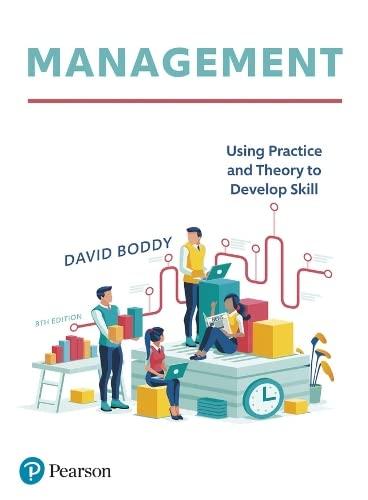Question
What Would You Do? 3M Headquarters (Minneapolis, Minnesota) With 40,000 global patents and patent applications, 3M has long been one of the most innovative companies
"What Would You Do?" 3M Headquarters (Minneapolis, Minnesota)
With 40,000 global patents and patent applications, 3M has long been one of the most innovative companies in the world. 3M codified its focus on innovation into a specific goal, "30/5," which meant that 30 percent of its sales each year must come from products no more than five years old. The 30/5 goal encouraged everyone at 3M to be on the lookout for and open to new ideas and products. Furthermore, 3M allowed its engineers and scientists to spend 5 percent of their time, roughly two hours per week, doing whatever they wanted as long as it was related to innovation and new product development.
And it workedfor a while. A decade ago, the Boston Consulting Group, one of the premier consulting companies in the world, ranked 3M asthemost innovative company in the world. In subsequent years, it dropped to second, third, and then seventh. Today, 3M doesn't even crack the top 50. Dev Patnaik, of Jump Associates, an innovation consulting firm, says, "People have kind of forgotten about those guys [3M]. When was the last time you saw something innovative or experimental coming out of there?"
When your predecessor became chief executive officer (CEO) 10 years ago, he found a struggling, inefficient, oversized company in need of change. He cut costs by laying off 8,000 people. He distributed marketing and research funds based on past performance and growth potentialperform poorly, and your funds would shrink the next year. Six Sigma processes, popularized at Motorola and GE, were introduced to analyze how things got done, to remove unnecessary steps, and to change procedures that caused defects. Through these processes, costs and capital spending dropped, while profits surged 35 percent to record levels. But, product innovation, as compared to the 30/5 goal, sank dramatically, as only 21 percent of profits were generated by products that were no more than five years old.
What should 3M do? From inception, 3M has been an innovator, bringing a stream of new products and services to market and creating value for customers, sustainable advantage over competitors, and sizable returns for investors. Thanks to your predecessor, 3M has lower costs, is highly efficient, and is much more profitable, but it no longer ranks among the most innovative firms in the world. Should 3M continue to focus on using Six Sigma procedures to reduce costs and increase efficiencies, or should it strive again to encourage its scientists and managers to focus on innovation? Which will make 3M more competitive in the long run?
When people think of innovation, they tend to think of game-changing advances that render current products obsolete. Innovation, however, also occurs with lots of incremental changes over time. What are the advantages and disadvantages for 3M of each approach, and when and where would each be more likely to work? Finally, some companies innovate from within by successfully implementing creative ideas in their products or services. Sometimes, though, innovation is acquired by purchasing other companies that have made innovative advances. Over time, how much should companies like 3M rely on acquisitions for innovation? Should 3M acquire half, one-third, 10 percent, or 5 percent of its new products through acquisitions? What makes the most sense and why?
If you were in charge at 3M, what would you do?
Question 1
Should 3M continue to focus on using Six Sigma procedures to reduce costs and increase efficiencies, or should it strive again to encourage its scientists and managers to focus on innovation? Which will make 3M more competitive in the long run?
Question 2
How much should companies like 3M rely on acquisitions for innovation? Should 3M acquire half, one-third, 10 percent, or 5 percent of its new products through acquisitions? What makes the most sense and why?
Step by Step Solution
There are 3 Steps involved in it
Step: 1

Get Instant Access to Expert-Tailored Solutions
See step-by-step solutions with expert insights and AI powered tools for academic success
Step: 2

Step: 3

Ace Your Homework with AI
Get the answers you need in no time with our AI-driven, step-by-step assistance
Get Started


